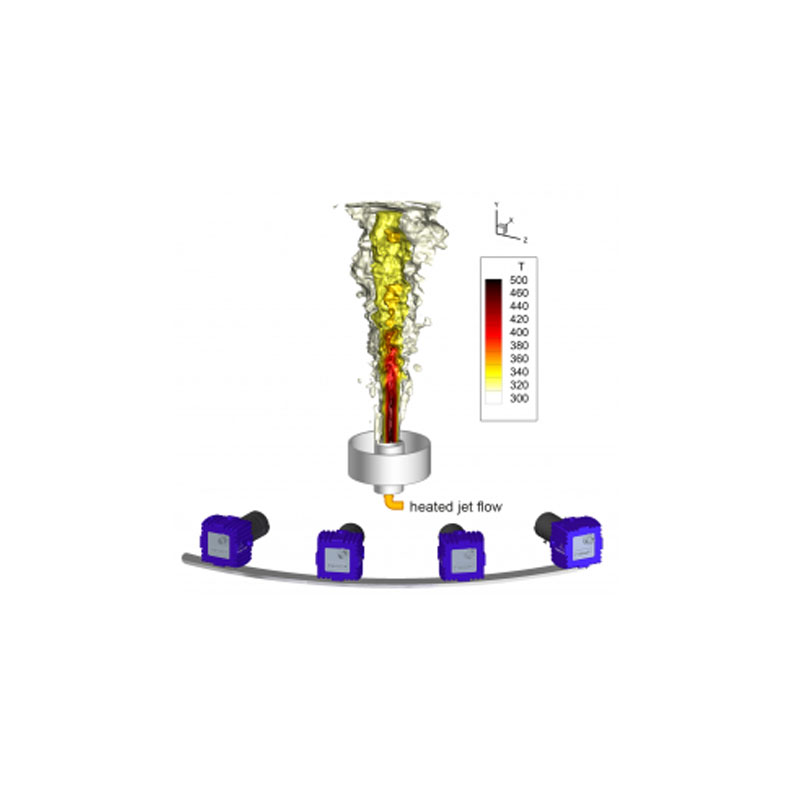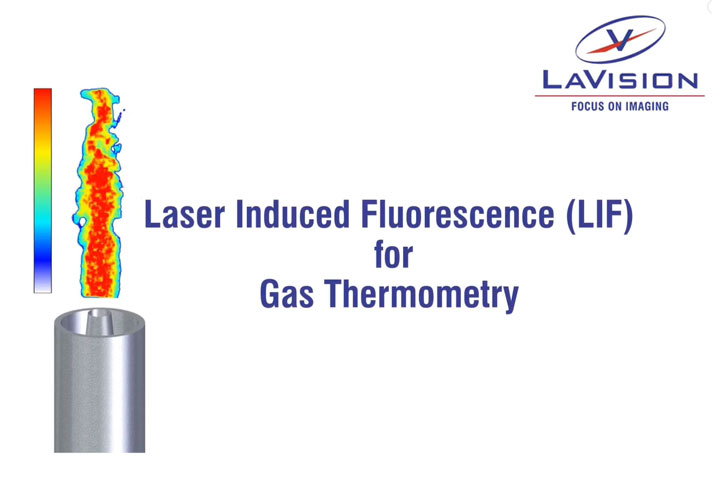
Temperature Imaging in Thermal Flows
Several imaging techniques have been developed to measure temperature in both liquid- and gas-phase flows. Because there is no single temperature imaging technique that can be applied under all circumstances, the particular application must be carefully considered. The experimental conditions and the type of thermal flow determine the selection of the best suitable method of temperature imaging. Background Oriented Schlieren (BOS) is an attractive alternative to laser imaging methods minimizing experimental efforts. BOS extracts temperature information from measured density gradients present in the thermal flow.
Gas Thermometry using different Imaging Techniques
Temperature fields in a heated air jet at 700 K measured with four optical methods are shown in the figure below. The standard deviation of each averaged temperature field is also indicated. More information is given in our Application Note “Temperature Imaging in Thermal Gas Flows”.


Single-shot (left) and averaged (right) temperature fields measured in a heated air jet at 700 K measured with four temperature imaging techniques

LIF Imaging in Thermal Flows
LaVision’s FluidMaster systems for LIF-Thermometry in thermal flows are using a variety of temperature sensitive LIF tracers for 1- and 2-color LIF thermometry:
1-color LIF Thermometry: At constant tracer seeding density the LIF signal is directly related to the local flow temperature, but laser light sheet and laser beam absorption corrections has to be applied. These corrections are provided in our LIF image processing module in DaVis.

2-color LIF Thermometry: In case the LIF tracer concentration is not constant, 2-color LIF thermometry is the best choice for fluid temperature measurements. This LIF imaging method uses the image ratio of two LIF emissions at different wavelengths (colors) to measure the fluid temperature. 2-color LIF ratio imaging is not only independent of the local tracer seeding concentration but also insensitive to changing illumination conditions across the laser light sheet. This superior image ratio approach needs a second camera or an image doubler in front of the lens of a single camera.
LaVision’s DaVis software is supporting multi-camera imaging with sophisticated image mapping functions for multi-directional views.
Need Inquire ?
If you need more information or quotation about this product, Our sales representative will reply as soon as possible
